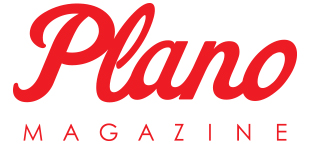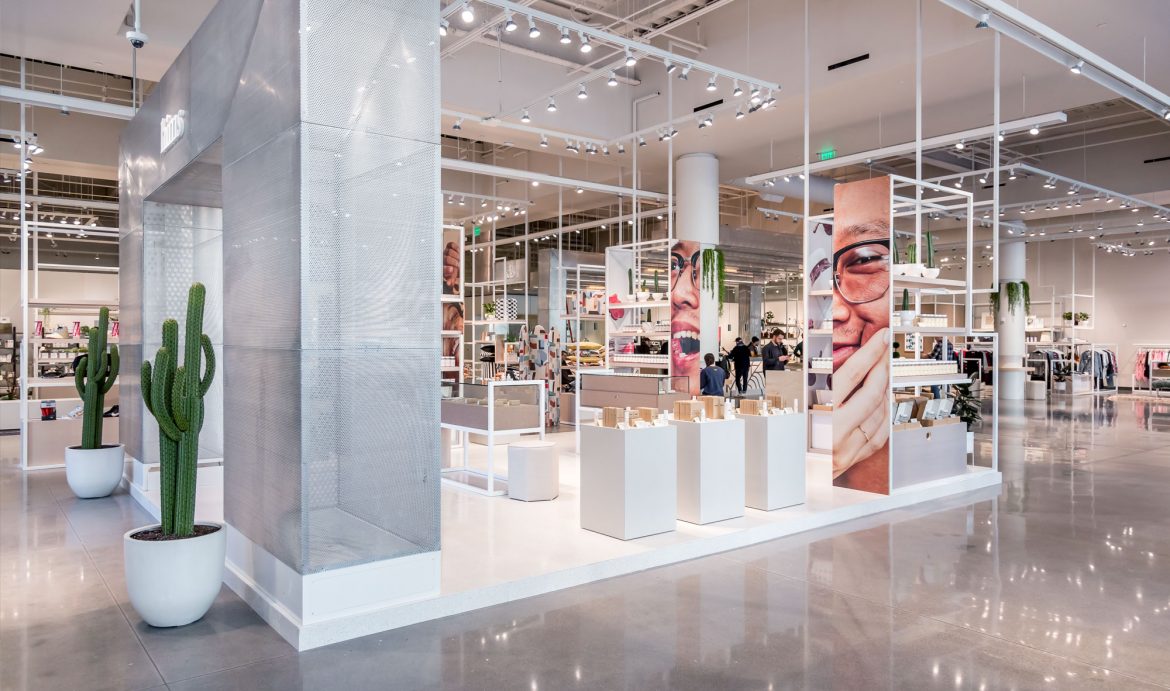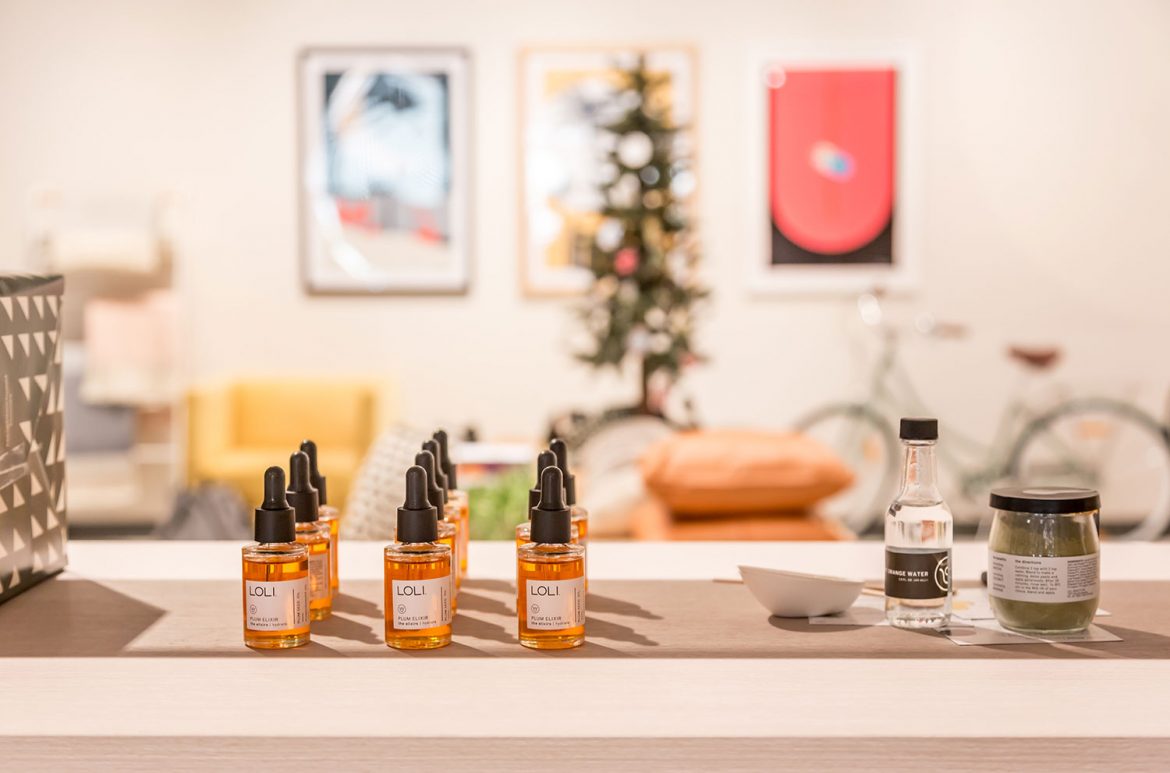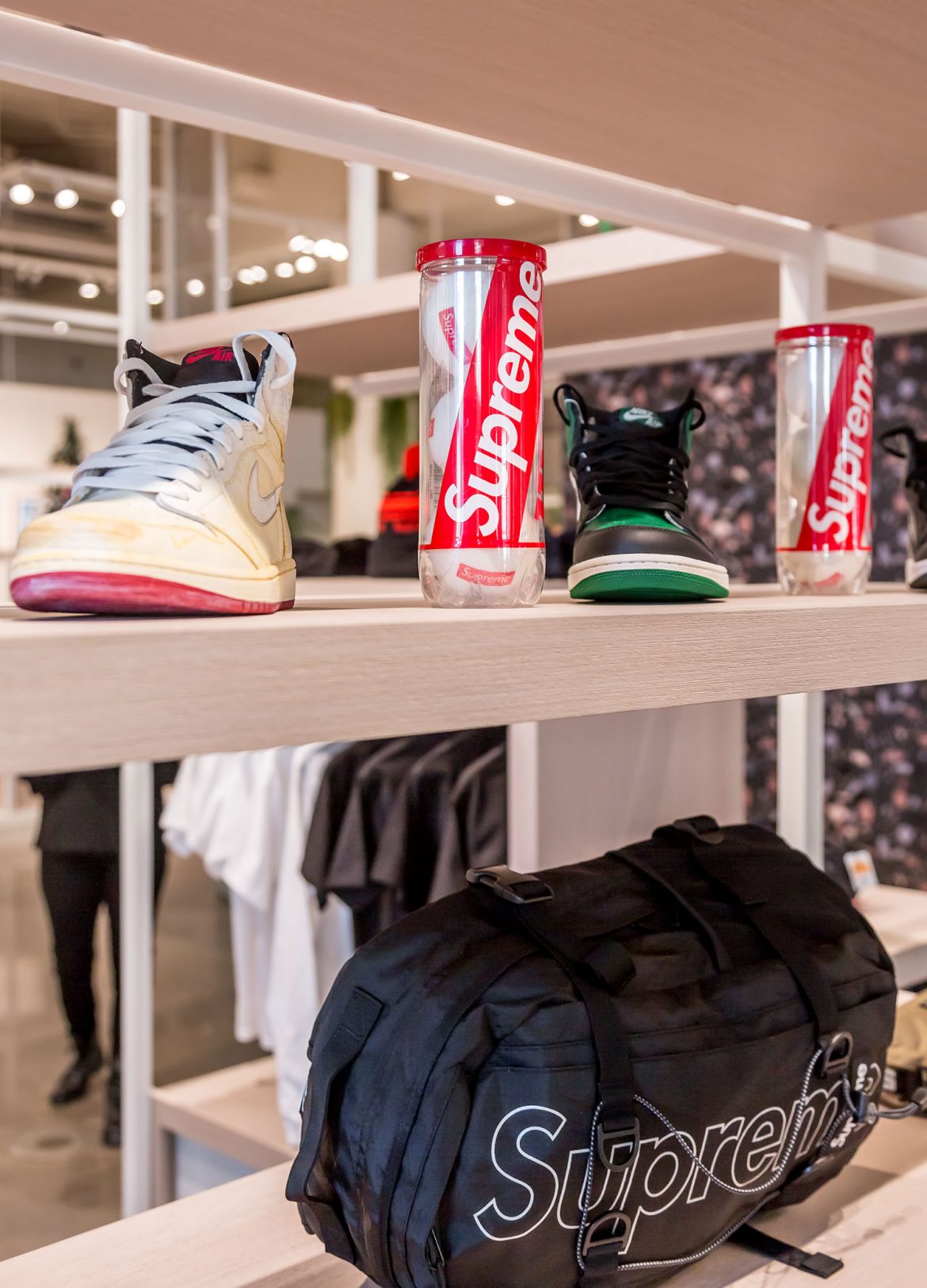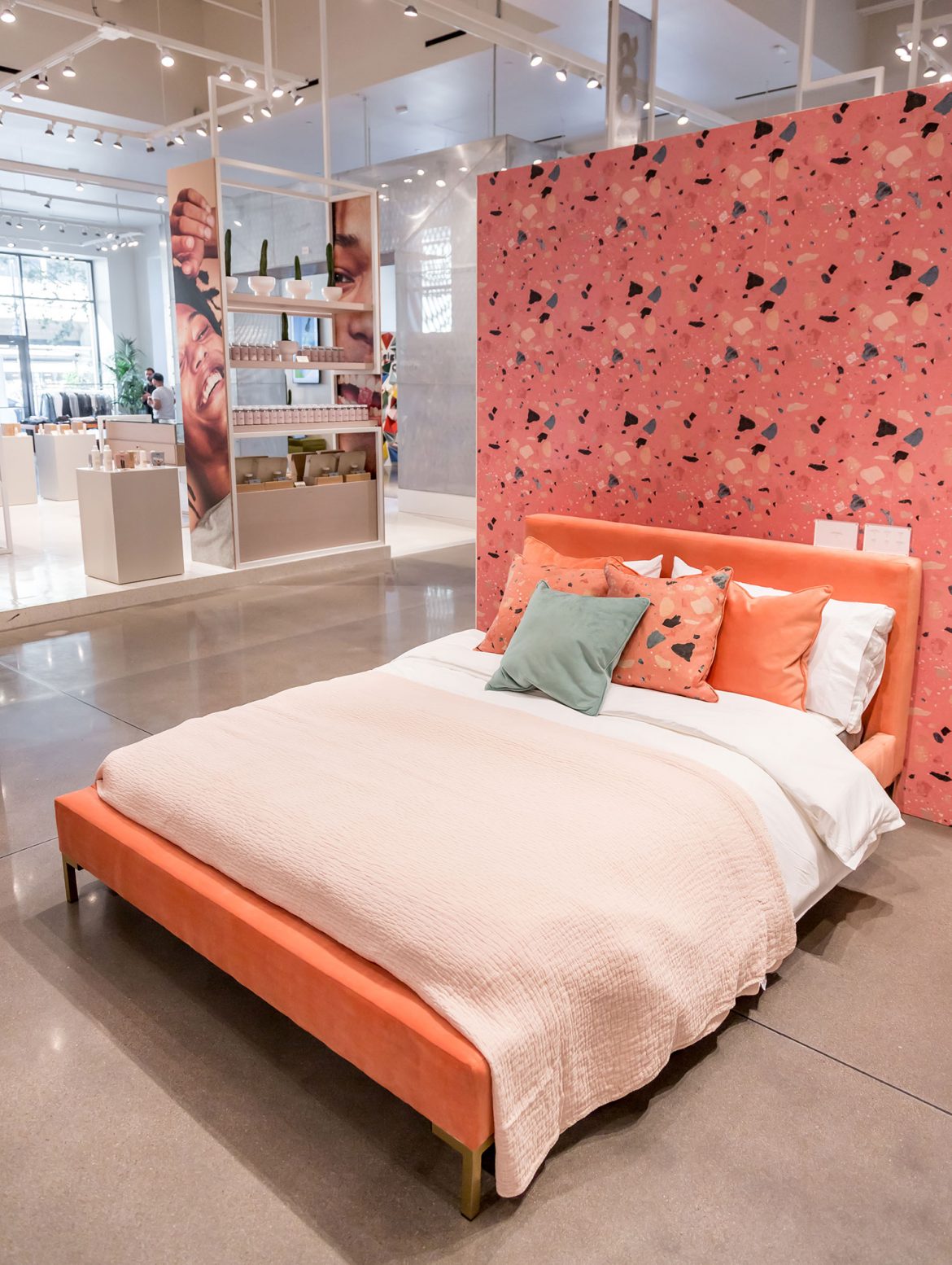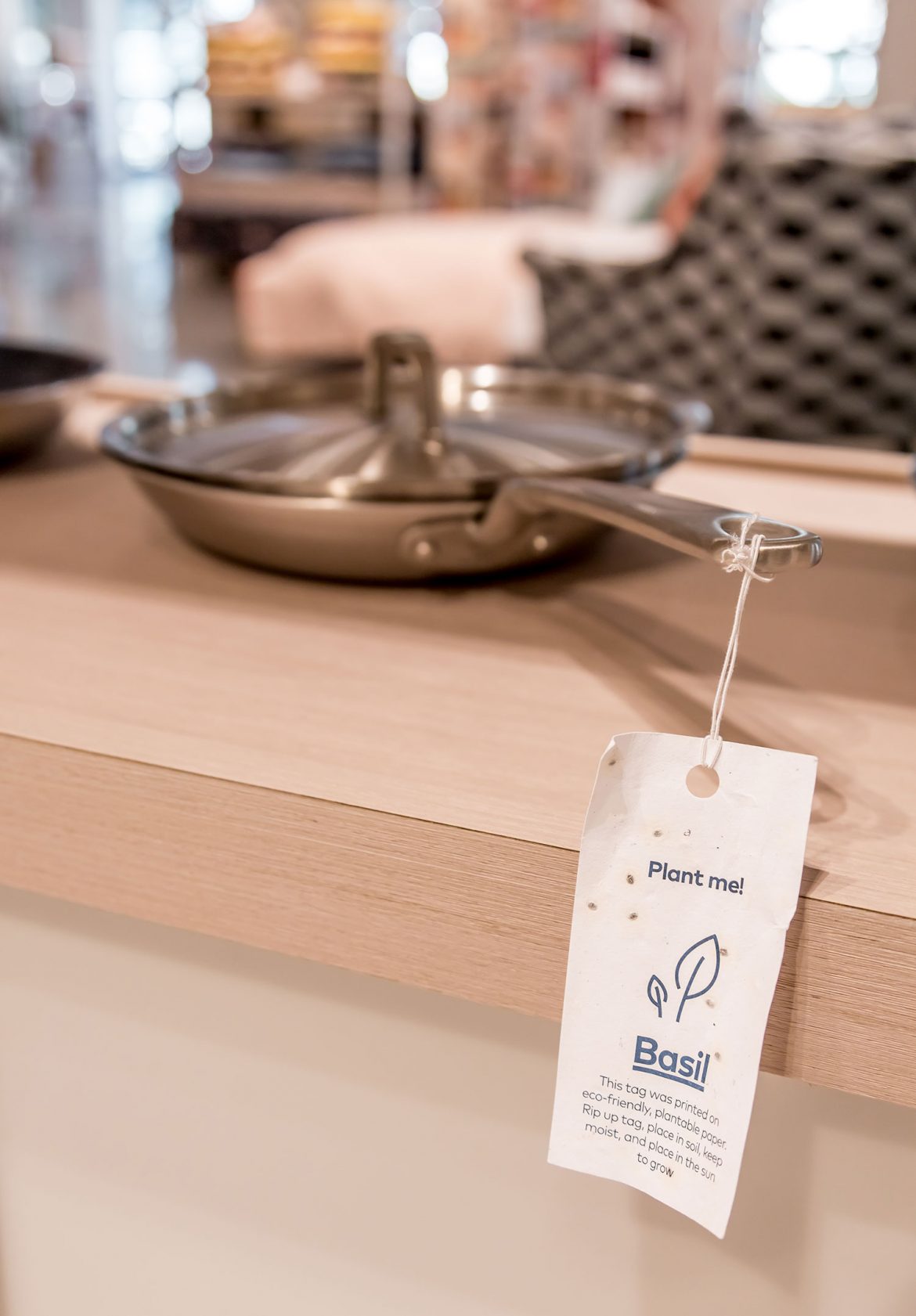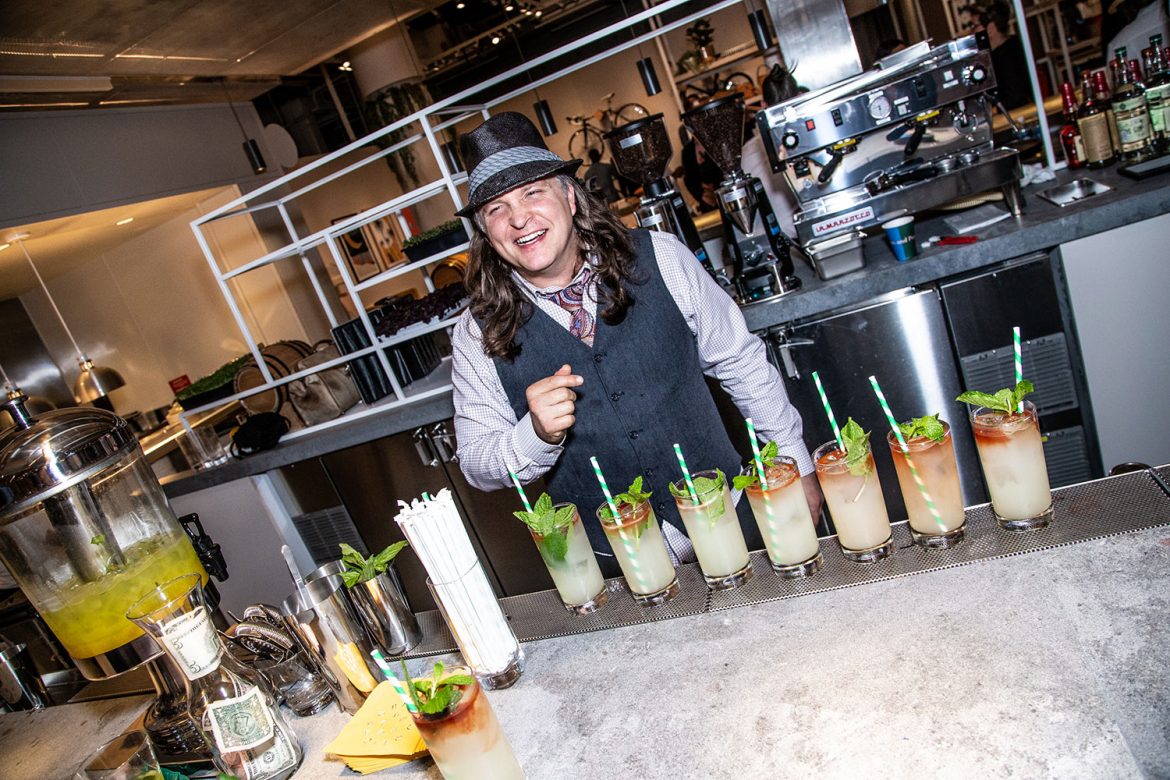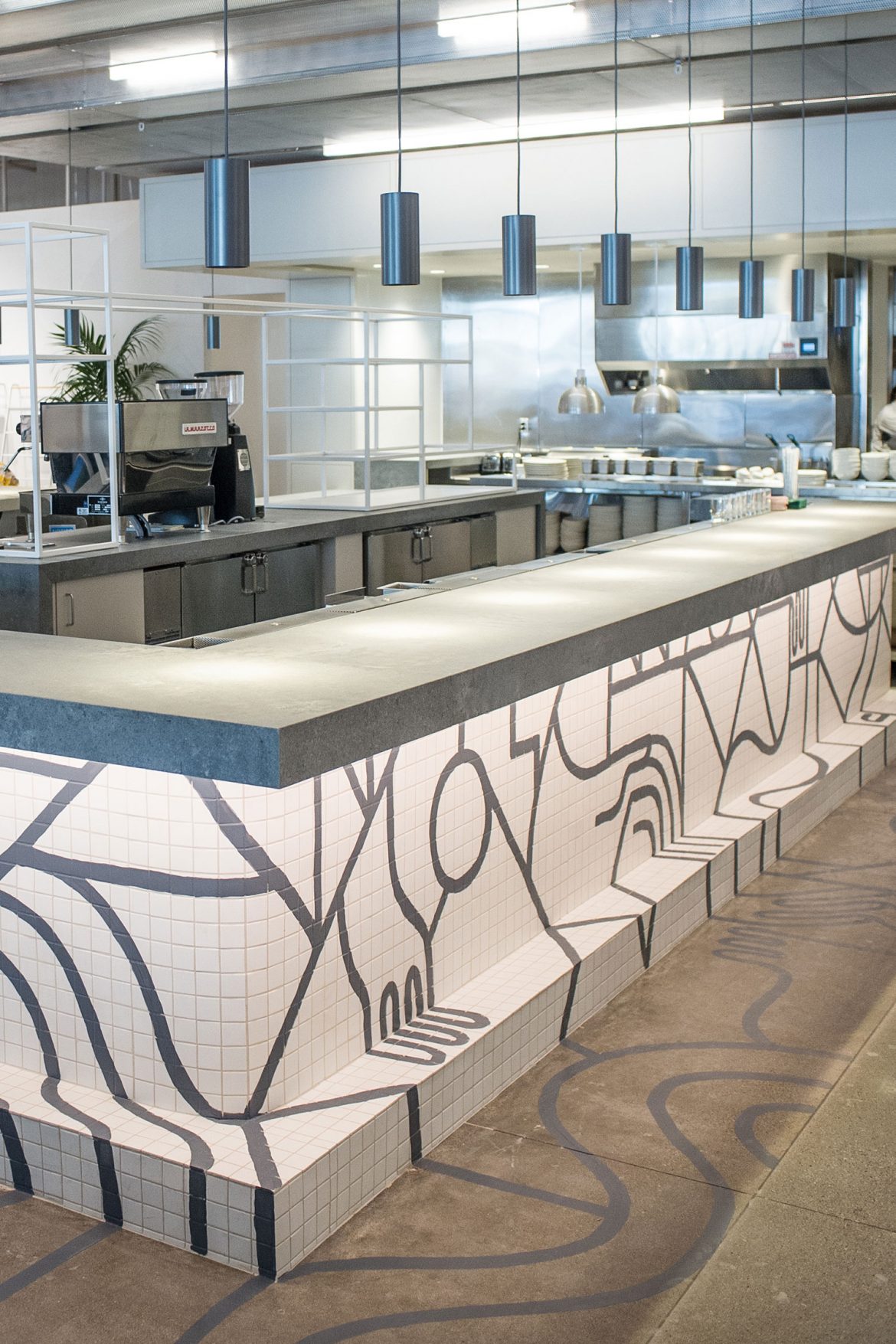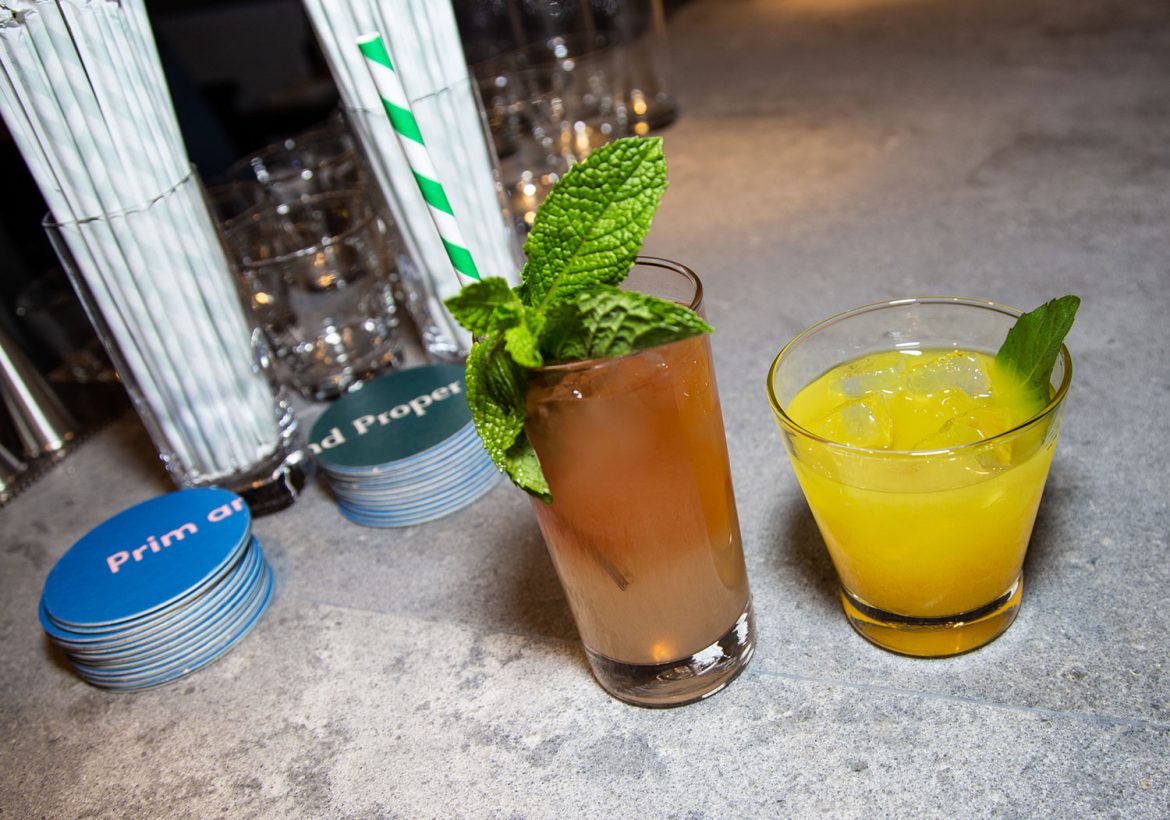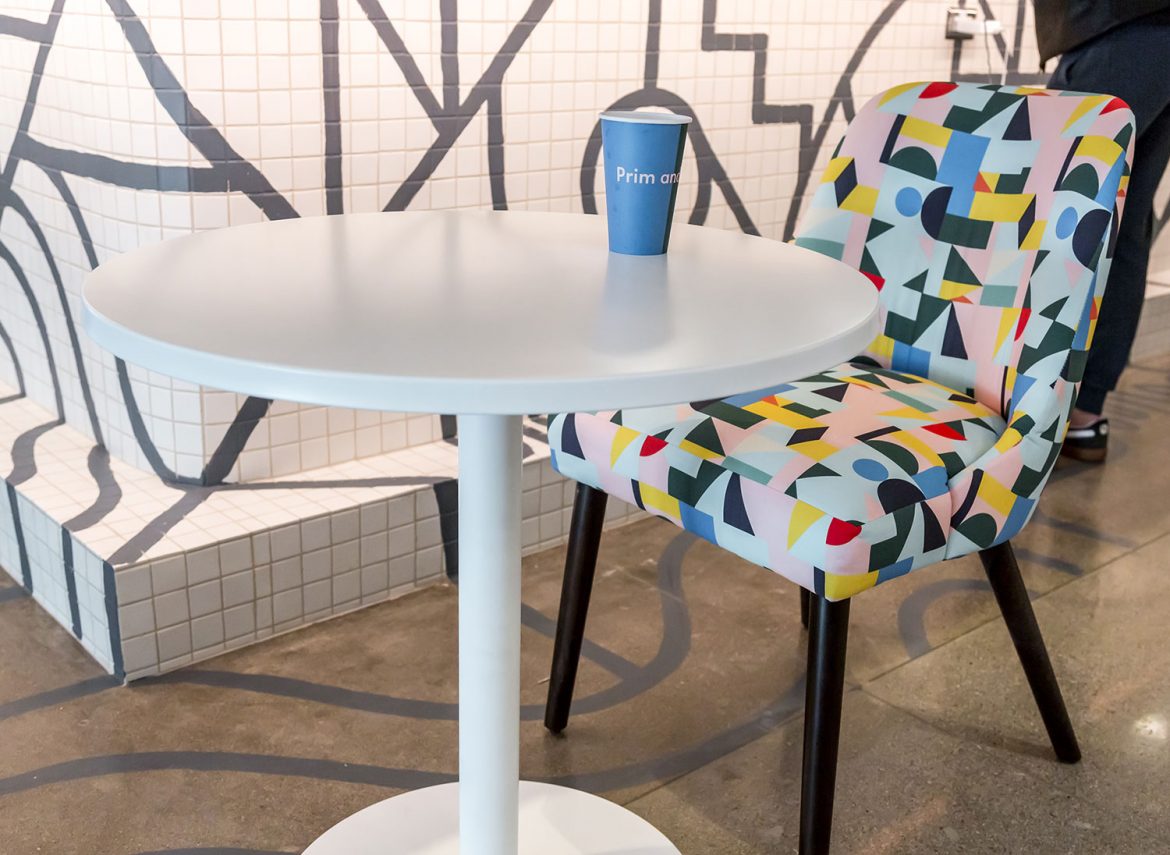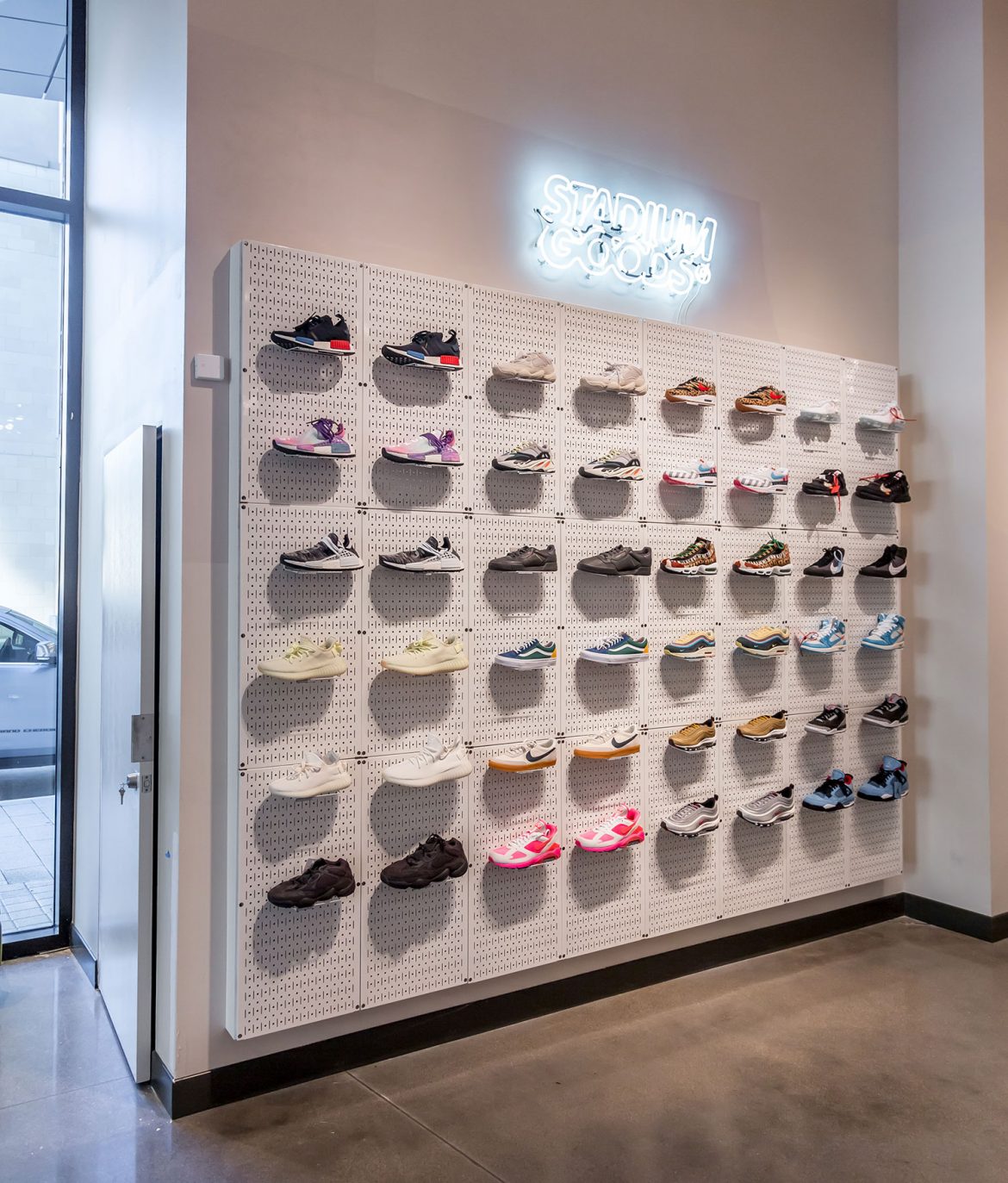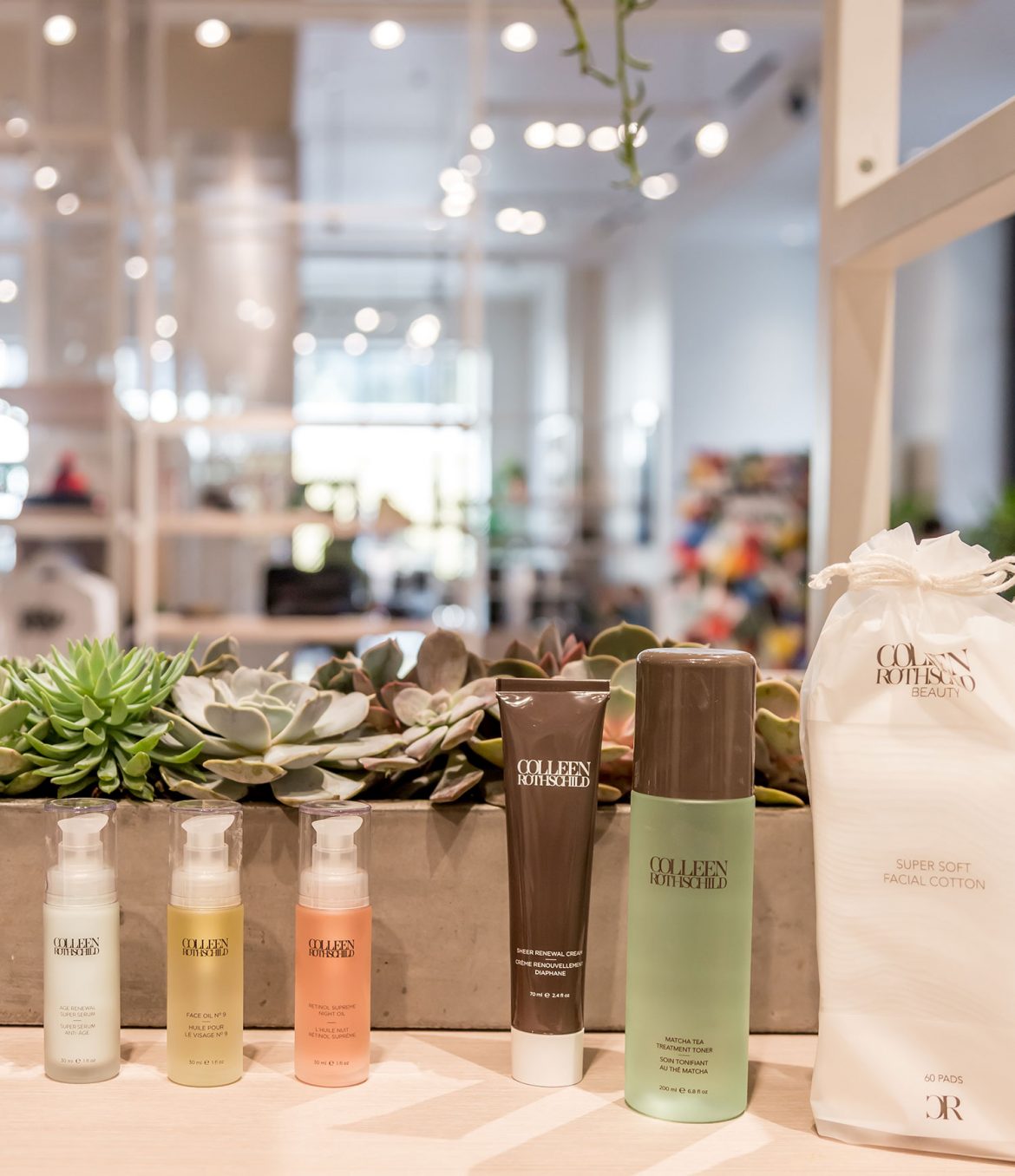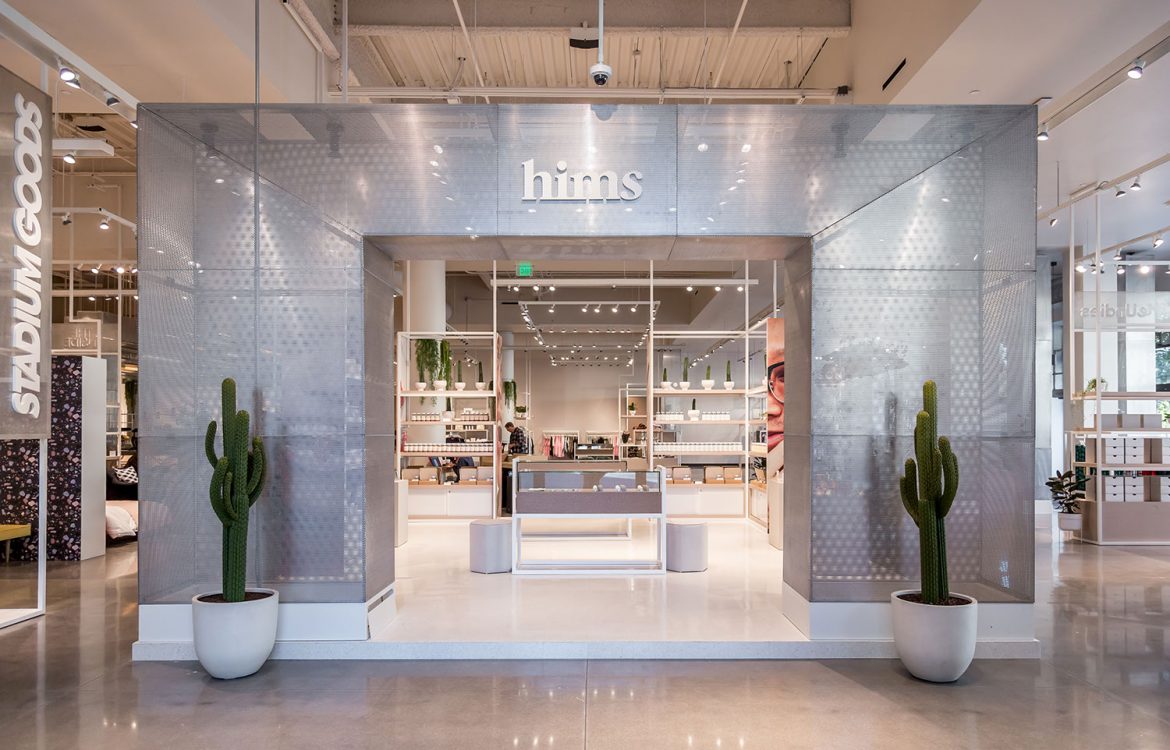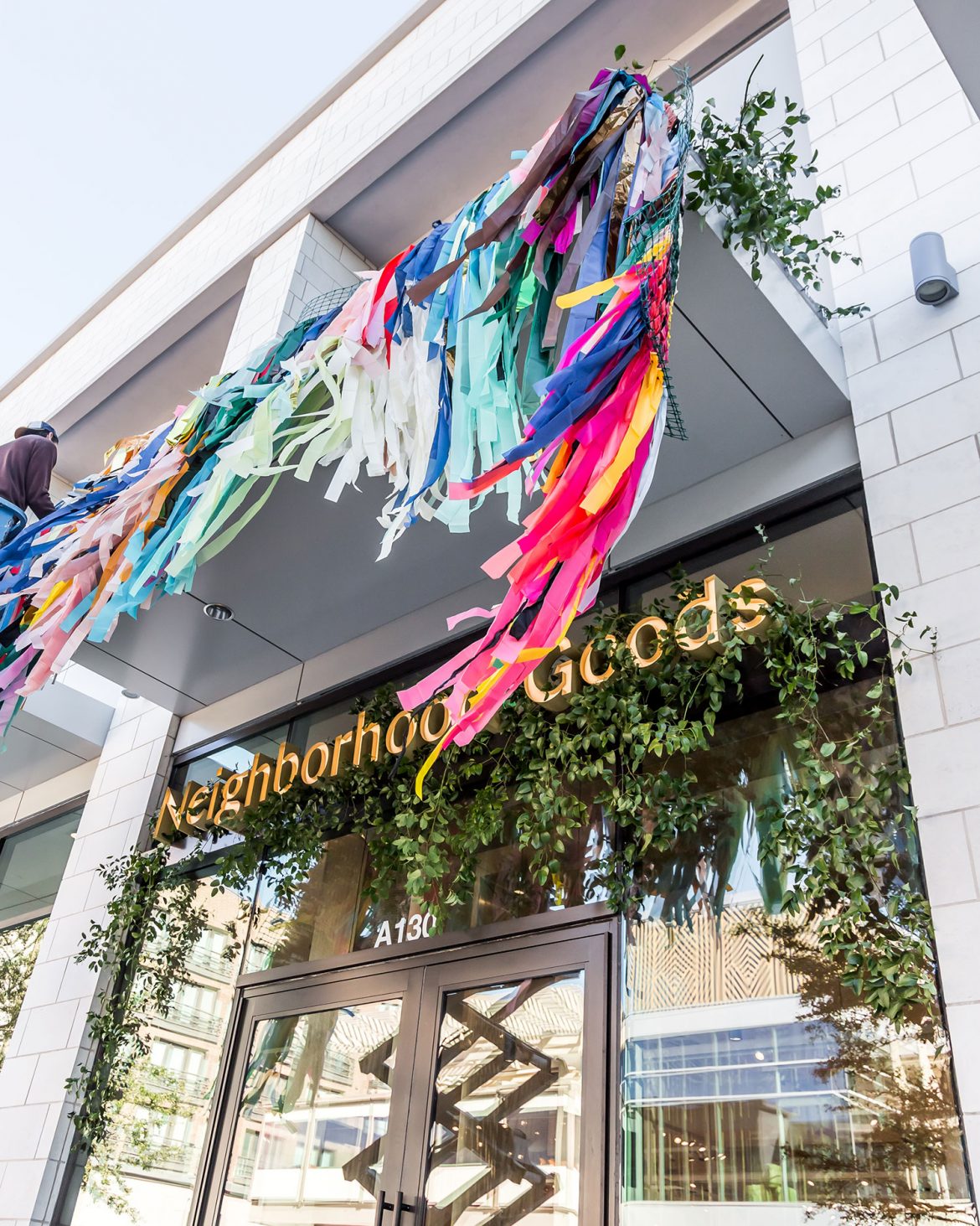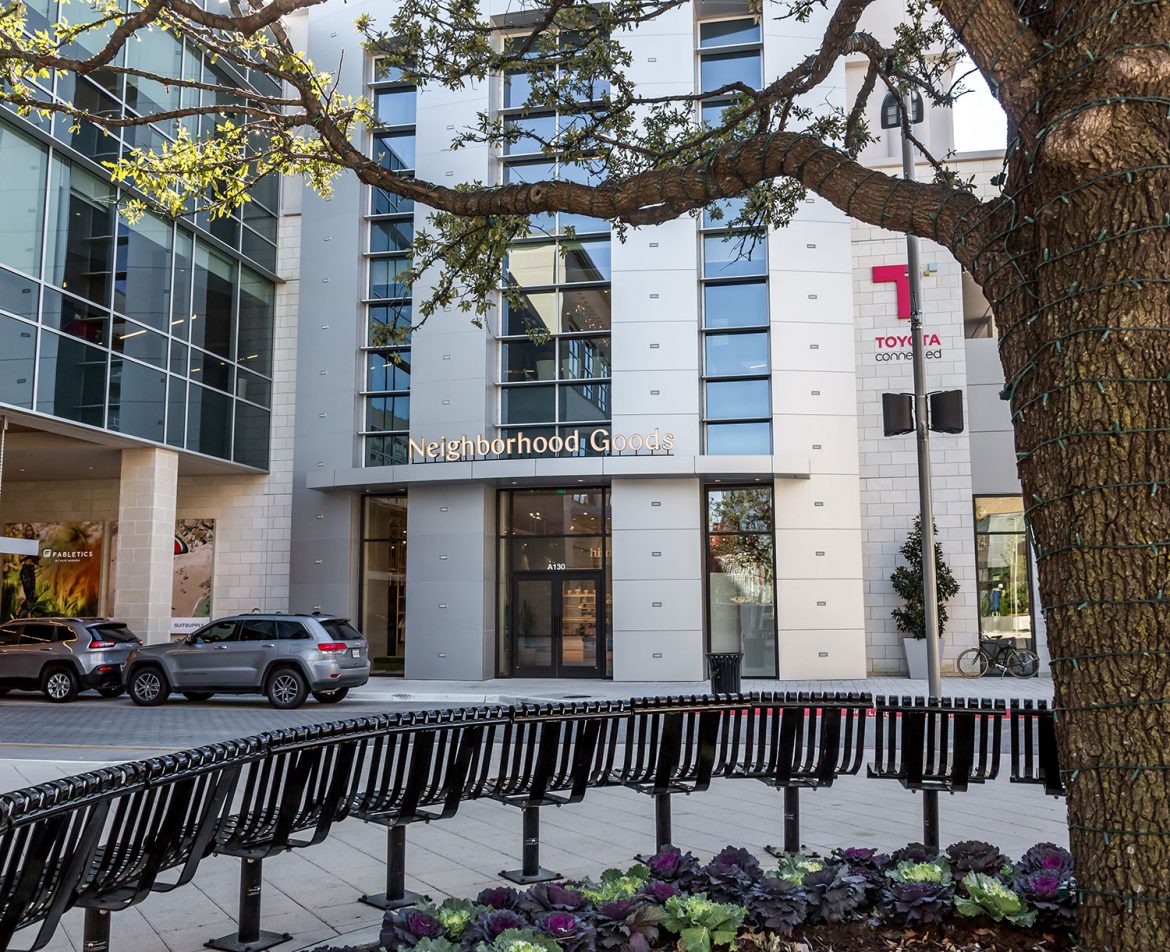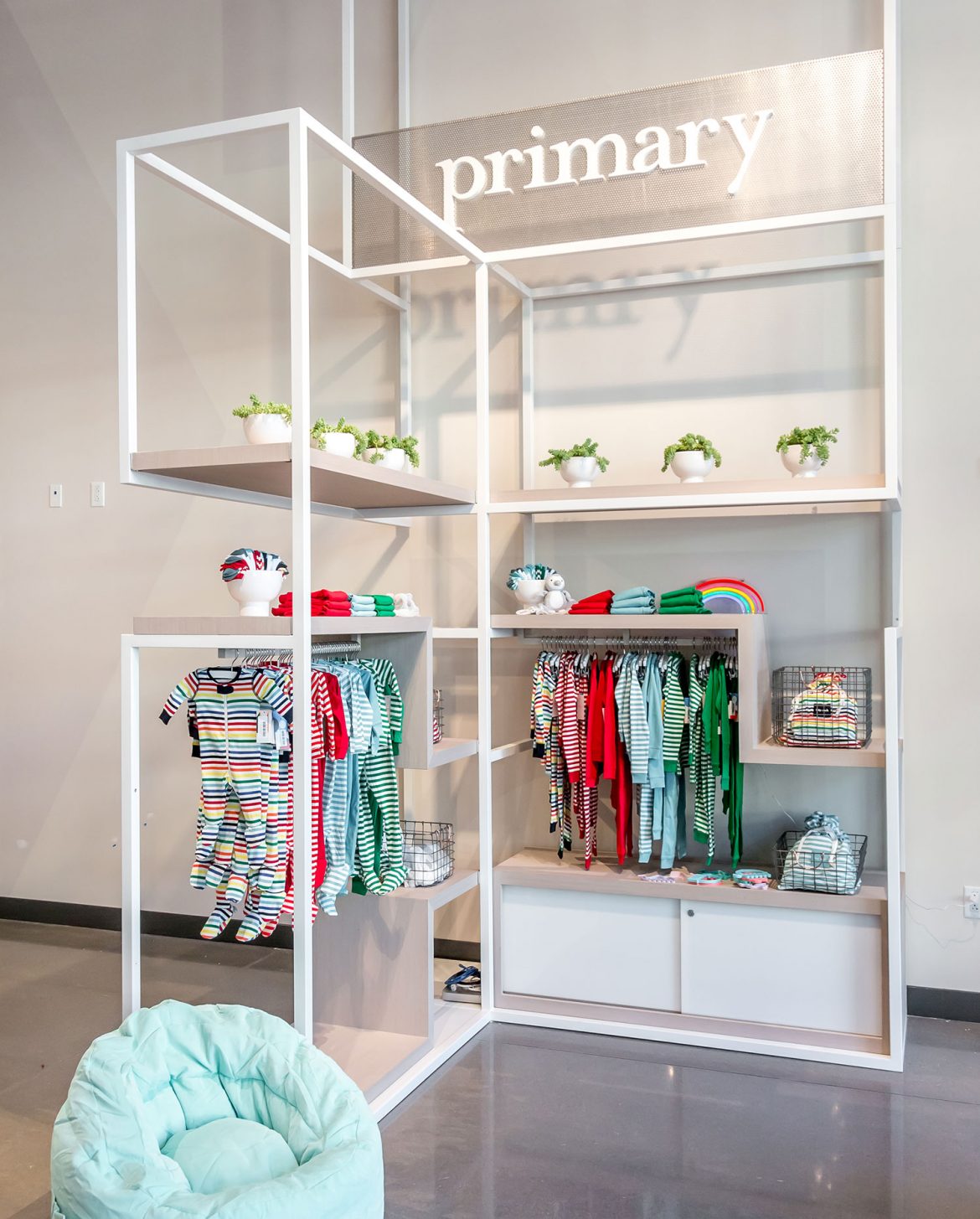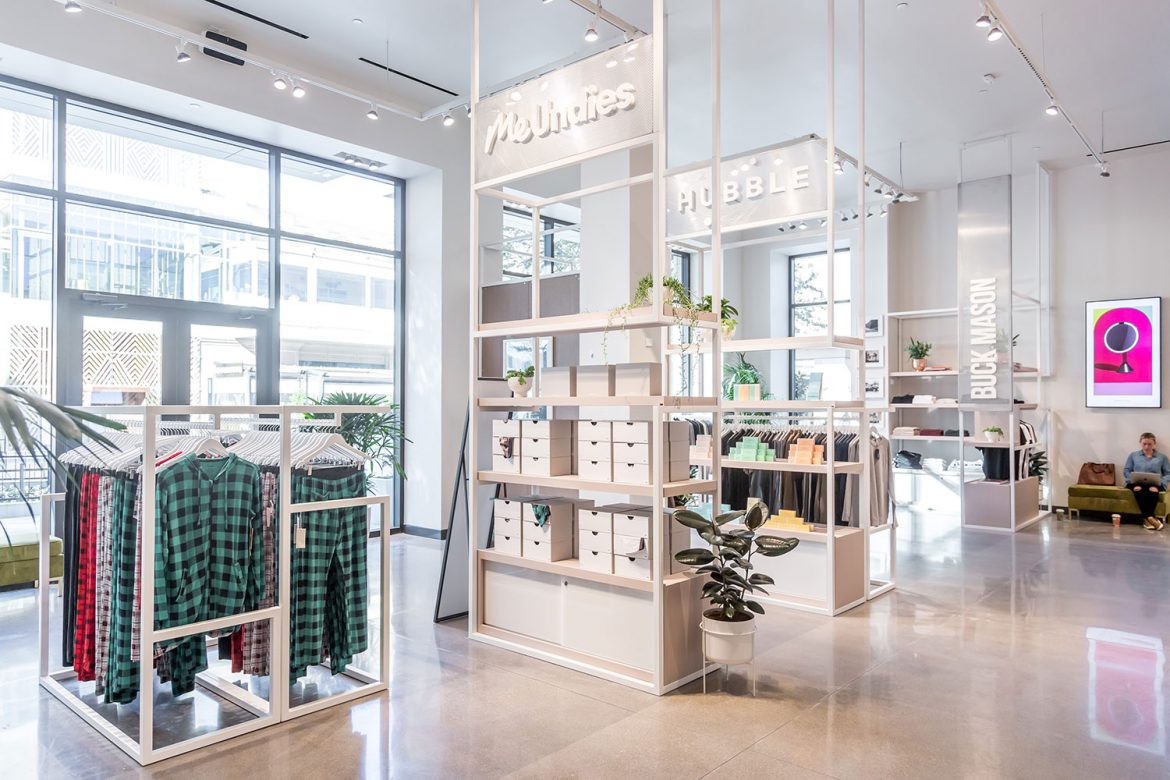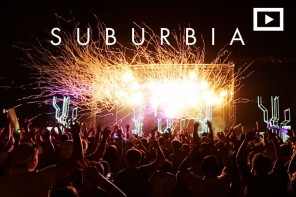It’s not that physical retail is dead, it’s just that boring and complacent retail is.”
These are bold words from Matt Alexander, one of the co-founders of Neighborhood Goods, opening Nov. 17 at Legacy West in Plano. Neighborhood Goods (NG) is a curated collection of rotating brands, all housed in a minimalist, 14,000-square-foot retail space that allows the merchandise to stand out and gives customers plenty of room to roam about.
Matt is no stranger to retail, having launched two brands previously, as well as Unbranded, a nonprofit organization in Dallas that provides local makers with free space for pop-up shops.
But don’t call Neighborhood Goods a pop-up. “This is the grown-up version,” he says.
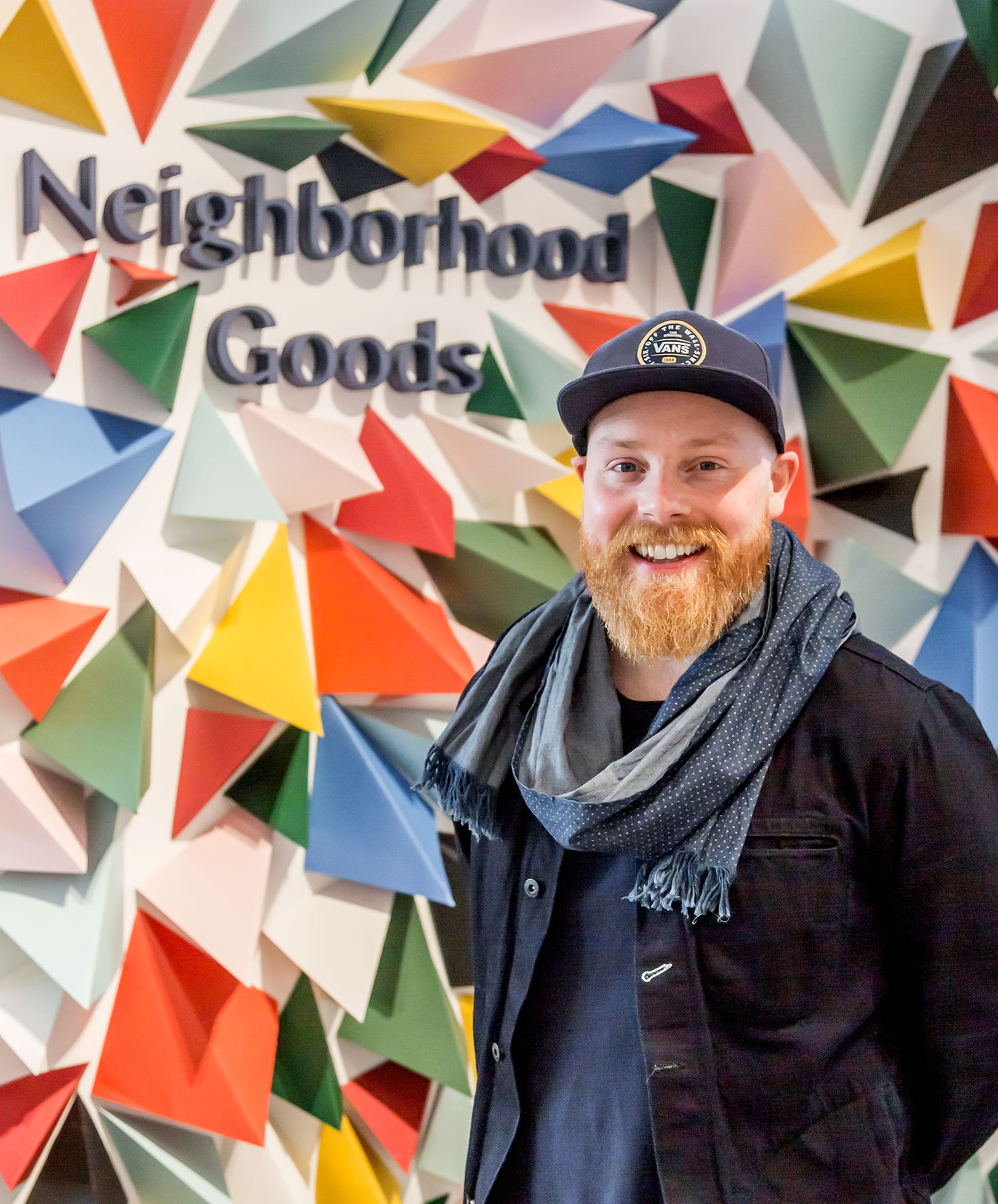
An Evolving Mix of Brands
Matt and his partner, Dallas developer Mark Masinter, have created an updated, unique take on the retail store that positions locally owned brands like Benincasa Milano (which hasn’t arrived to NG yet, but will shortly) next to more established, buzzworthy brands like Reese Witherspoon’s Draper James.
These brands are located around the space in different zones, or “activations,” as the NG team calls them. Each activation is minimally merchandised and easy to shop. It looks more like an art gallery than a department store. Most of the inventory is kept in the back. Shoppers find what they want in the display and then page a store associate via mobile app or self check-out stations to deliver it.

There are about 15 different activations inside Neighborhood Goods at any one time. The Gift Guide activation is currently set up with a curated mix of items suggested for holiday gift-giving, like prints from Dallas artist Rob Wilson, Framebridge art frames, Pure Cycles bikes and Citizenry home decor. Other activations are an experience for a single brand, like the wall of limited-edition sneakers from Stadium Goods or the toddler and kids’ clothing from Primary. Everything in NG is shoppable, down to the Sonos speakers playing music and the dinner plates from the in-house restaurant.
Matt and his team are looking for that perfect, always evolving mix of big brands and little brands. Some have never been available in a physical location before (like The Inside), some have done pop-ups only (like Desmond & Dempsey), and some are only available in bigger cities (like Supreme). The price points occupy a wide range, down to house-branded enamel pins available for just a few bucks.

“You need the juxtaposition of big brands that people know next to the little brand they don’t. I think that’s something a lot of these guys have never experienced, and that’s one of the fun things about what we’re doing.”
But Matt swears choosing brands has nothing to do with how new they are to a physical space or not. It’s about “whether they have the capacity and willingness to do something interesting,” he says.
The length of time that particular brands are in residency at Neighborhood Goods will vary: Some will be there for over a year and some for as little as two months. For the brands that stay for up to a year, their merchandise will still constantly rotate out so it’s fresh. The entire store will never switch over at once; there will be gradual changes, one activation at a time. And even when a brand leaves, customers can still purchase its products from the Neighborhood Goods app as long as there is inventory left.
Meeting Shoppers Where They Are
One of Neighborhood Goods’ strengths – and probably a step where many retailers fall short – is its ability to meet each shopper on his or her own terms. Some shoppers will want to have that traditional experience, coming in to interact with sales staff and ask questions about a product. NG ensures the best service possible by bringing on store associates who are paid fairly, don’t depend on commission (so they’re not overly pushy) and feel invested in the experience (all store associates have access to a messenger-like app where they can share immediate feedback with fellow associates and the store leadership).
But Matt is very interested in how well they can cater to the more self-conscious shoppers. These customers have already done their homework online and prefer to get in and out quickly. They can walk in, find the product, scan it and check themselves out on the iPads or the app. The only interaction they’d have with sales staff is when the associate finally delivers the product to them in a bag. “Shopping is somewhat of an extroverted activity and can be quite uncomfortable for some people. The app allows us to make that so much more easy for those people.”
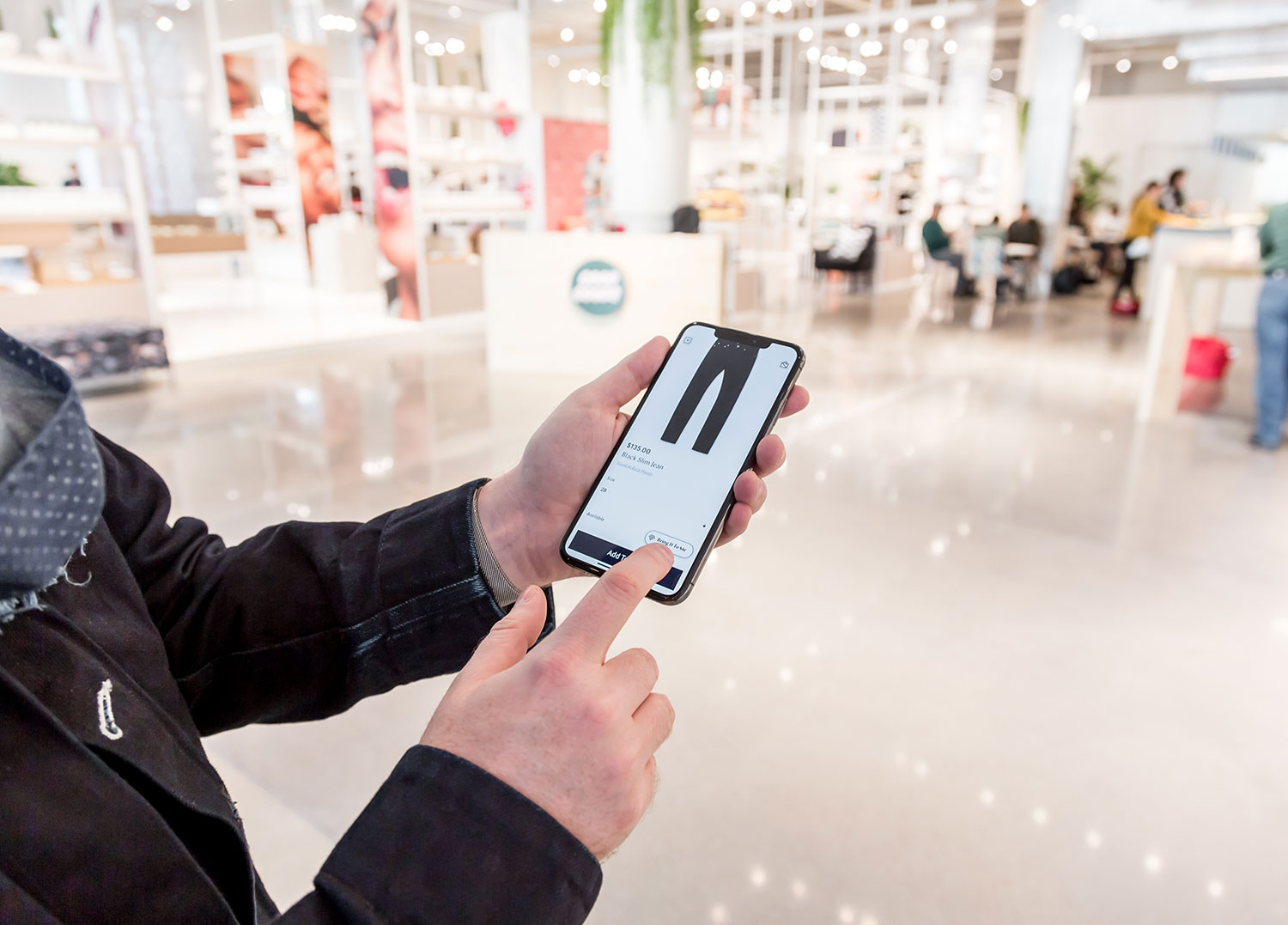
Some guests may just come in for a quick burger or beer with friends at the in-house restaurant, Prim & Proper, operated by Front Burner Restaurants. Say they’re scrolling through the NG app and something catches their eye. They can immediately text questions about that item to a store associate. Or they can go ahead and check out online and have the associate drop off their purchase at the table.
The Neighborhood Goods team also sees the space as more than a place just to shop or eat; it’s a place where brands can grow and people can gather. A podcast will launch soon, recorded live in the store, in which the people behind these brands can tell their stories. The team also plans an in-house editorial publication. They would love to provide a spotlight on interesting people in the community, and to partner with nonprofits and brands for events.
Neighborhood Goods is planning a weeklong celebration Nov. 17-24 for its grand opening. Details below.
